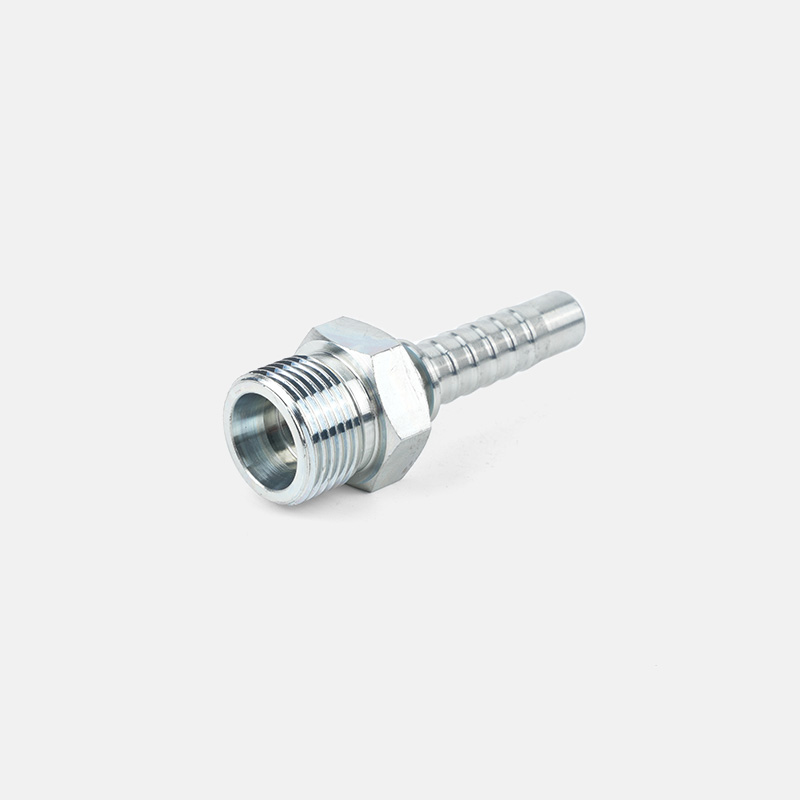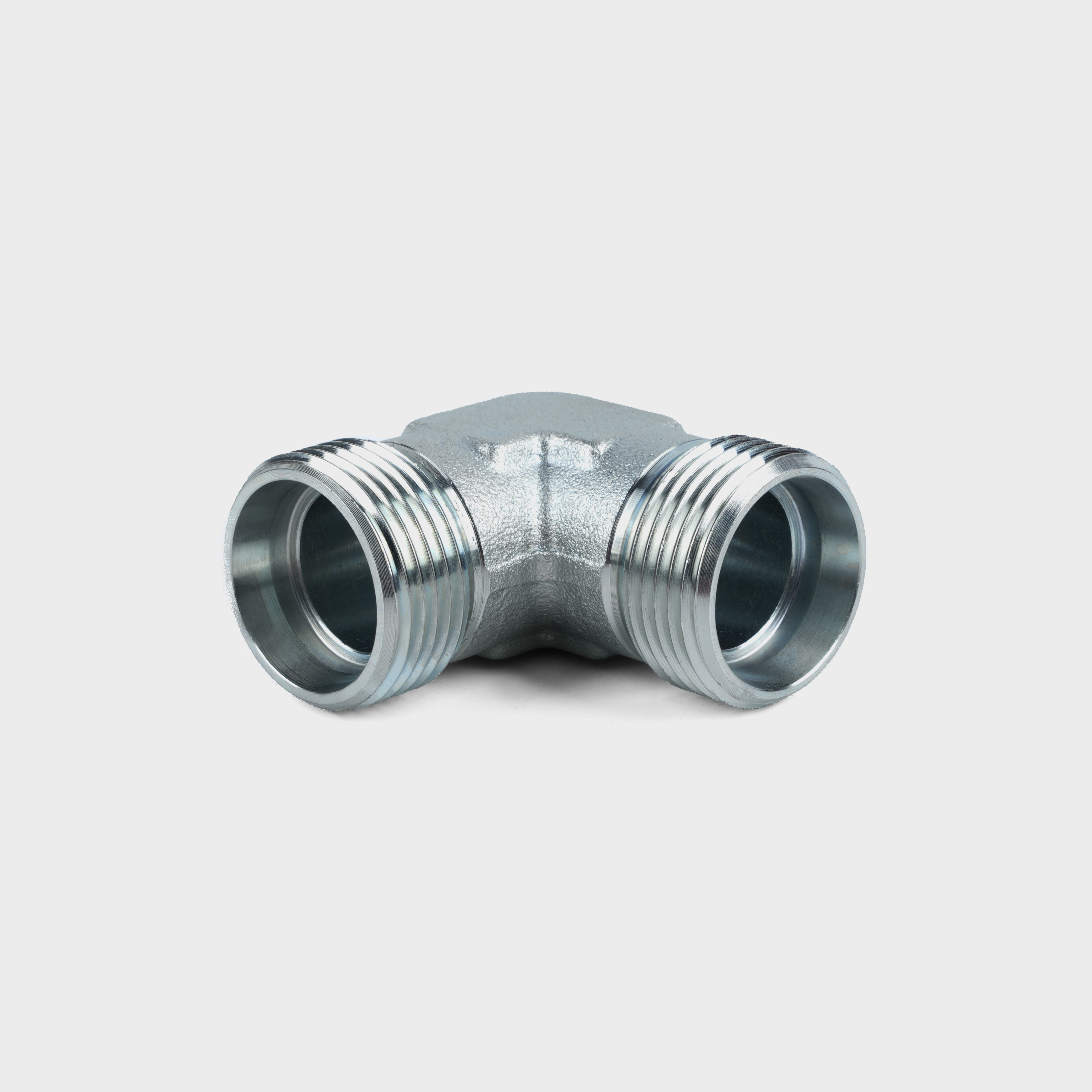Language
ENGWhat are the main functions of Metric Thread Banjo and Bolt-70011?
 2024.09.30
2024.09.30
 industy news
industy news
1. Stability of hydraulic connections
Metric Thread Banjo and Bolt-70011 plays a vital role in hydraulic systems, and one of its main functions is to provide a stable and reliable connection. The unique design of the Banjo connector includes a rounded connection end and a bolt, which creates a strong and stable connection between hydraulic lines. Unlike traditional straight-line connections, the "L" shape of the Banjo connector allows hydraulic lines to be staggered in a limited space, adapting to complex installation environments. This design not only simplifies the installation process, but also reduces potential problems caused by loose joints or leaks. The metal-to-metal sealing surface of the Banjo connector ensures the tightness of the connection, even in high-pressure or high-vibration environments, and maintains good sealing performance, thereby improving the overall reliability and safety of the system. This connection method is particularly important in hydraulic systems because it can effectively prevent fluid leakage, reduce maintenance requirements, and ensure long-term stable operation of the system.
2. Effectiveness of pressure transmission
Metric Thread Banjo and Bolt-70011 is designed to achieve efficient pressure transmission. The Banjo connector transfers liquid or gas to the other end of the connection through its center hole. This design can minimize the resistance of the fluid during transmission and ensure that the hydraulic system can maintain stable flow under high pressure conditions. The Banjo connector is designed to not only withstand hydraulic pressures up to thousands of psi, but also effectively transmit pressure to various components in the system without causing pressure loss or flow reduction. This efficient pressure transmission capability makes the Banjo connector perform well in industrial applications, especially in situations where high-pressure fluids are required. Compared with traditional connection methods, the Banjo connector can reduce the pressure loss of the fluid when passing through the connector and improve the efficiency of the entire system. This is crucial for hydraulic systems that require precise pressure control and high efficiency, and can ensure the performance stability and reliability of the system under high-pressure operation.
3. Suitable for installation in compact spaces
The design features of the Metric Thread Banjo and Bolt-70011 make it particularly suitable for installation in space-constrained environments. In many industrial equipment and machinery, space constraints often make it difficult to adapt to traditional straight-line connections. The "L" shape of the Banjo connector provides a solution that enables cross-connection of hydraulic lines in small or inaccessible areas. Since the Banjo connector is designed to allow liquid or gas to flow through the connection point without adding additional space, this feature makes the installation process more flexible and convenient. This design not only improves the flexibility of installation, but also reduces the installation difficulties caused by space limitations, thereby saving time and reducing costs. Especially in industries such as automobiles, construction machinery or aerospace, the compact design of the Banjo connector can effectively solve the space problem in complex wiring and improve the design and maintenance efficiency of equipment.
4. Anti-vibration and shock resistance
Metric Thread Banjo and Bolt-70011 performs well in the face of vibration and shock, which is a key advantage in high-load environments. In hydraulic systems, especially in heavy machinery or high-performance engines, equipment and pipelines are often subject to vibration and shock. The Banjo connector is designed to effectively resist these mechanical stresses, and through a solid metal structure and optimized thread design, the risk of loosening or leakage of the connection point due to vibration and shock is reduced. This anti-vibration and shock resistance not only improves the stability of the system, but also reduces equipment failures and downtime caused by connection failure. Especially in extreme working conditions, such as mines, construction sites or high-performance vehicles, the strong tolerance of Banjo connectors ensures the continuous and stable operation of hydraulic systems, thus ensuring the long-term reliability and productivity of equipment.
5. Simplified maintenance and replacement
The design of Metric Thread Banjo and Bolt-70011 is not only simple during installation, but also convenient during maintenance and replacement. Due to its standardized thread size and unified interface design, users can easily find matching accessories for replacement or repair without special tools or complicated operations. Compared with other types of connectors, the structure of Banjo connectors is relatively simple, making repair work faster and more efficient in the event of a failure. For example, if a Banjo connector leaks or is damaged, users can quickly replace the corresponding parts, reducing system downtime and improving production efficiency. The durability of Banjo connectors reduces maintenance frequency and further reduces maintenance costs. By reducing dependence on professional technicians and simplifying maintenance procedures, Banjo connectors help users save time and resources, making equipment operation more economical and efficient.
6. Compatibility and Standardization
The design of Metric Thread Banjo and Bolt-70011 complies with international standard metric thread specifications, making it widely compatible. Whether in industrial applications around the world or in a variety of equipment and systems, users can easily find matching accessories for use. The standardized design of the Banjo connector ensures that it can be used with standard components in various types of hydraulic and pneumatic systems without the need for special adapters or modifications. This compatibility makes the Banjo connector a universal solution that can adapt to various engineering and industrial needs, improving the flexibility and integration of the system. The standardized design also simplifies the procurement process, allowing users to quickly obtain the required accessories, further improving the convenience and efficiency of equipment maintenance.














